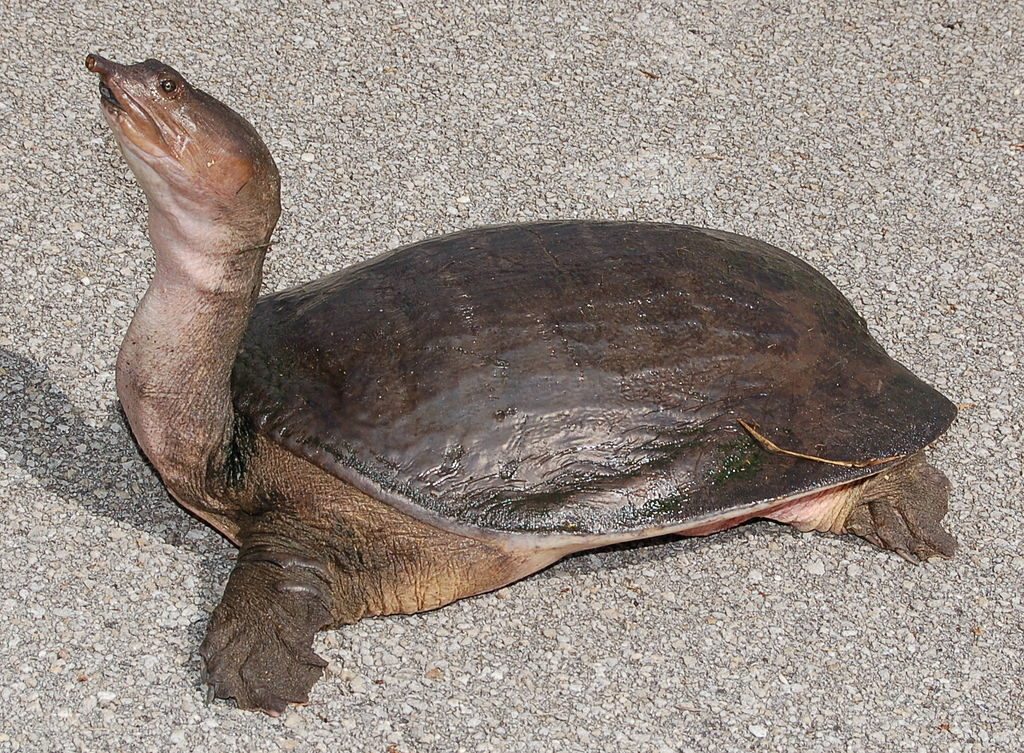We’re seeing the online forums light up all this week with posts about Orlandoans encountering turtles in the streets, in their backyards, public parks, you name it. And most of them are the weird-looking Florida softshell turtle, pictured above.
Softshell turtles are easy to identify because, as their name suggests, they have smooth shells, with soft edges. They almost look like they’re wearing two burned pancakes instead of a shell. They have long necks and protruding nostrils that they use like snorkels when they bury themselves into sand or mud in shallow water.
They rarely leave the safety of the water, but when they do, it’s either to find a better habitat or to lay eggs on the dry land. They like to find loose sand for their eggs that is exposed to the sun so they can incubate naturally. And they’re not afraid to lumber around to find the perfect spot.
Softshell turtles can’t hide in their shells, and they don’t provide much protection from oncoming traffic or predators. They have If you see one crossing the road, be a good neighbor and help usher them across the street in the way they’re already headed. If you take them back where they started from, they might just try it all over again and all you’ve done is made them tired from all that crawling. If you’re going to try to pick them up, be careful of their long necks and lift from around their back legs. Scooping them up in a box is probably the safest bet for the turtle and for you.
Some people hunt softshell turtles for food. It is illegal to take more than one turtle per person, per day, from the wild for non-commercial use. They can only be taken by hand, dip net, minnow seine, or baited hook.



They can also run at a pretty fast pace as well.